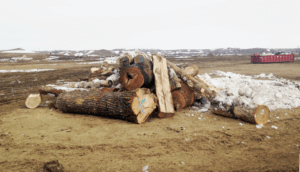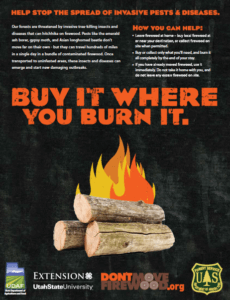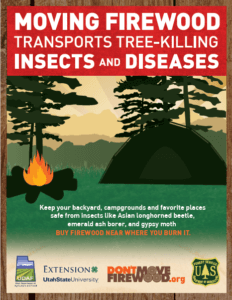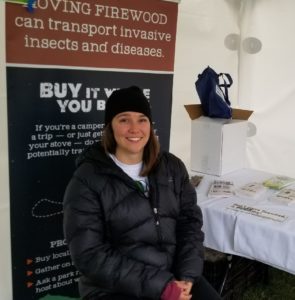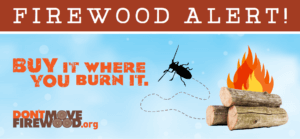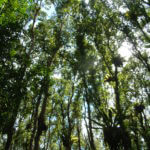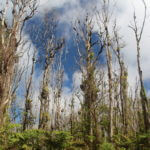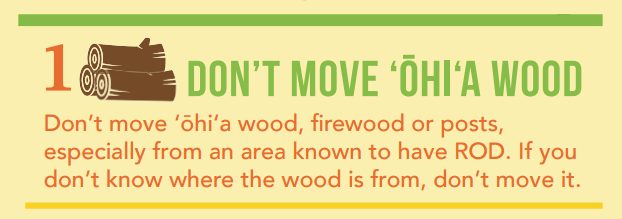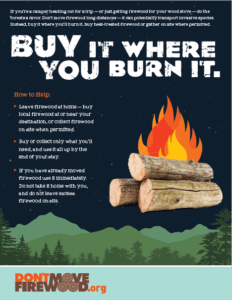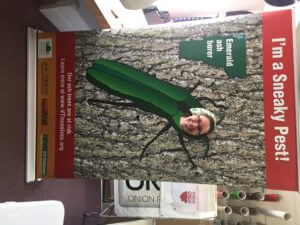Guest blog by Paul Kingsbury, Director of Communications for The Nature Conservancy’s Tennessee Chapter
In the summer of 2013, The Nature Conservancy’s Tennessee Chapter (TNC) and the Tennessee Department of Agriculture’s Division of Forestry (TDF) were facing a heavy lift. Emerald ash borer (EAB), spongy moth and hemlock woolly adelgid (HWA) had invaded the state and were expanding their footholds. Asian longhorned beetle (ALB) could be next. How could we fight them with our limited staffs and budgets?
We started small with a strategy of raising awareness about the invasive pest threat among forestry professionals, city arborists, public land managers and the general public. We began with TDF radio PSAs, rack cards, yard signs and posters; regional outreach meetings with tree professionals; print advertising; and news stories and op-eds in Tennessee newspapers. The initial plan was to help people readily identify the pests and encourage them to call in sightings to TDF.
A breakthrough came that first summer when we created an inexpensively printed giveaway wallet card for identifying six main invasives: ALB, EAB, HWA, spongy moth, thousand cankers and sudden oak death. Tree professionals loved it! We could hardly meet the demand, and the University of Tennessee and the North Carolina Forest Service soon joined as partners to defray the printing costs and use them.
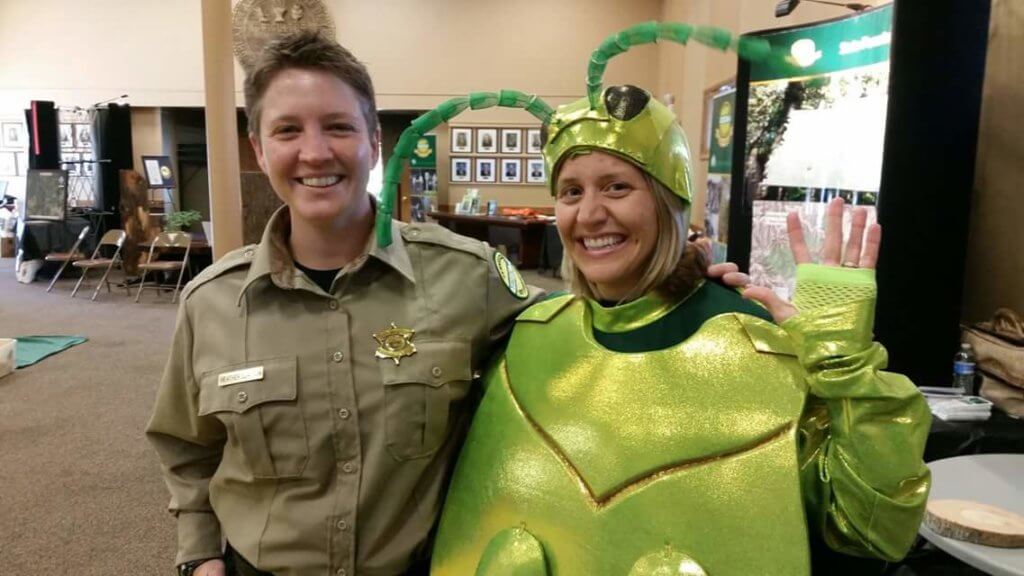
Heather Slayton of Tennessee Department of Agriculture’s Division of Forestry (in uniform) with Trish Johnson of The Nature Conservancy’s Tennessee Chapter (in costume)
Even better, the National Park Service began talking with us about addressing invasive pests in the Great Smoky Mountains National Park. Park staff had been communicating their concerns about pests with park management and suggested a possible firewood policy. In turn, park management voiced their concerns about public reaction to such a policy change and emphasized the importance of having enough heat-treated firewood vendors to support visitors’ needs. A partnership formed where TNC could fill both of these needs and begin to enlist partners to assist in a public outreach campaign to pave the way for understanding and acceptance of the new firewood rule.
That was early 2014. Over the next year, we at TNC, TDF and NPS engaged additional partners to help us work out a multi-faceted strategy to educate park visitors. We soon had Tennessee State Parks (TSP), Tennessee Natural Areas, North Carolina State Parks, NC Forest Health, USDA Animal, Plant & Health Inspection Service(APHIS), the US Forest Service and Leigh Greenwood of TNC’s Don’t Move Firewood program on our team. Our joint objective was to prepare the public for new firewood policies in Great Smoky Mountains National Park and gain solid acceptance.
For a year, the partners deployed outreach billboards in five states that have interstates leading to the Smokies. We collaborated on FAQ documents for the web and print, posters, rack cards, ALB and EAB costumes, print ads, and online campground reservation form language—all to raise awareness about the firewood pest issue. TNC took the lead on surveying the certified firewood market, helping to encourage new retailers, and in creating a TNC web map for the public to locate vendors selling certified firewood.
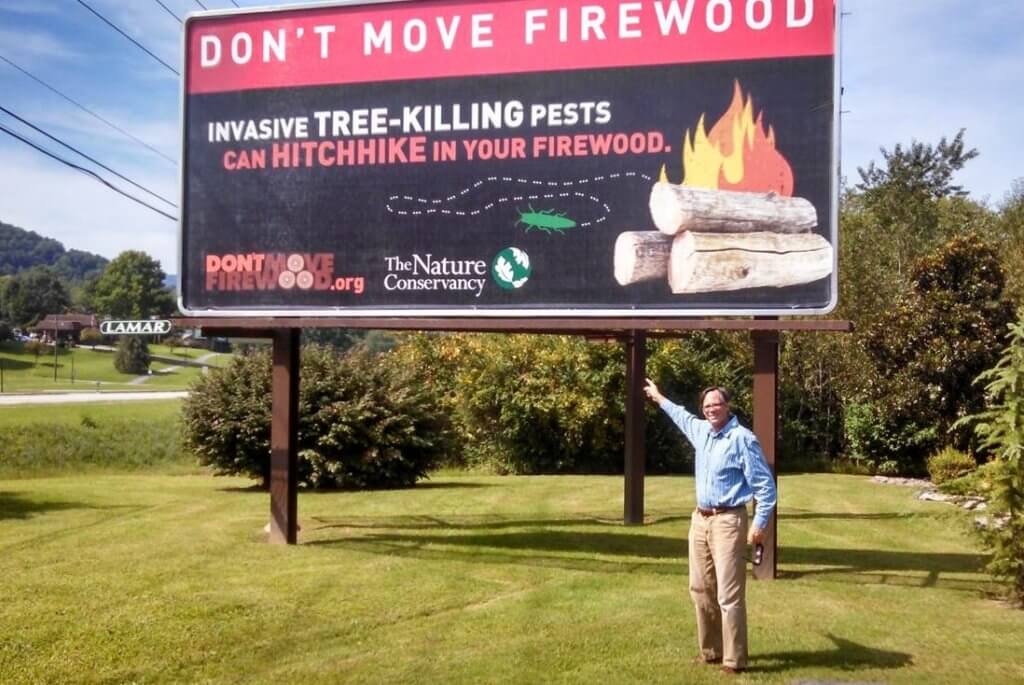
Alex Wyss of The Nature Conservancy’s Tennessee Chapter in front of one of the first billboards used in the Tennessee efforts
In March 2015, NPS rolled out the new firewood policy for the Smokies. Our multi-faceted public education campaign worked! There were very few complaints from park visitors. They understood why the new rules were necessary. Following that resounding success, our Tennessee State Parks partners were soon ready to explore a new firewood policy for their parks statewide—an enormously impactful expansion of the program.
To gauge the public mood for this expansion, TNC supplied an intern who visited TSP campgrounds surveying guests about firewood and potential new policies for using certified wood. The surveys reassured TSP management that the public would likely accept and even support the policy change. In June 2016, TSP rolled out their new firewood policies. Again, the partners prepped the public with TDF radio and web PSAs and a TNC op-ed that ran in newspapers across the state, plus TDF smart-phone ads targeted to users of weather apps. Public reactions proved largely supportive with little complaint.
Meanwhile, to meet the growing demand for heat-treated firewood, in the spring of 2016 our partnership began hosting a series of free workshops for the public across Tennessee on how to run a certified, heat-treated firewood wholesale business. In these workshops, we found strong interest among budding entrepreneurs. We continue to host these workshops.
As of March 2017, our consortium of parks with protective firewood policies now includes the Blue Ridge Parkway and the US Army Corps of Engineers campgrounds in the Nashville District. Thanks to the messaging and graphics we developed through our outreach to the public for the Great Smoky Mountains National Park and Tennessee State Parks, roll-out of the new firewood policy has become a more turnkey operation, with a big savings in time and money for the US Army Corps.
It started out as a heavy lift, but many hands make light work! We hope that other states and larger geographies can take our approach and continue the efforts to protect the forests we all rely on for our work and play. Contact Trish Johnson, Director of Forest Conservation for The Nature Conservancy in Tennessee, for more information: trisha_johnson@tnc.org.




